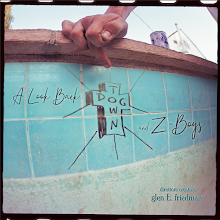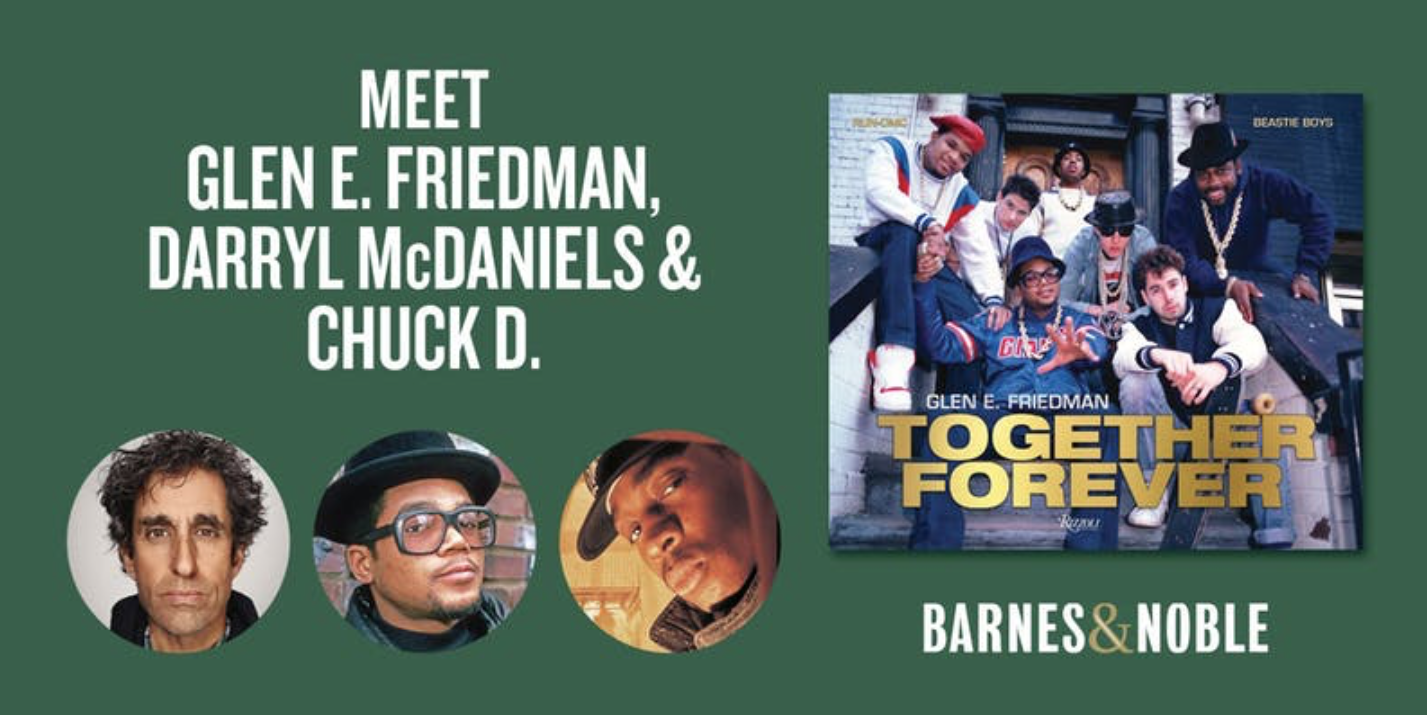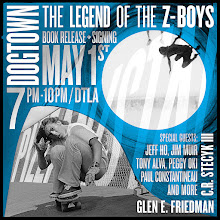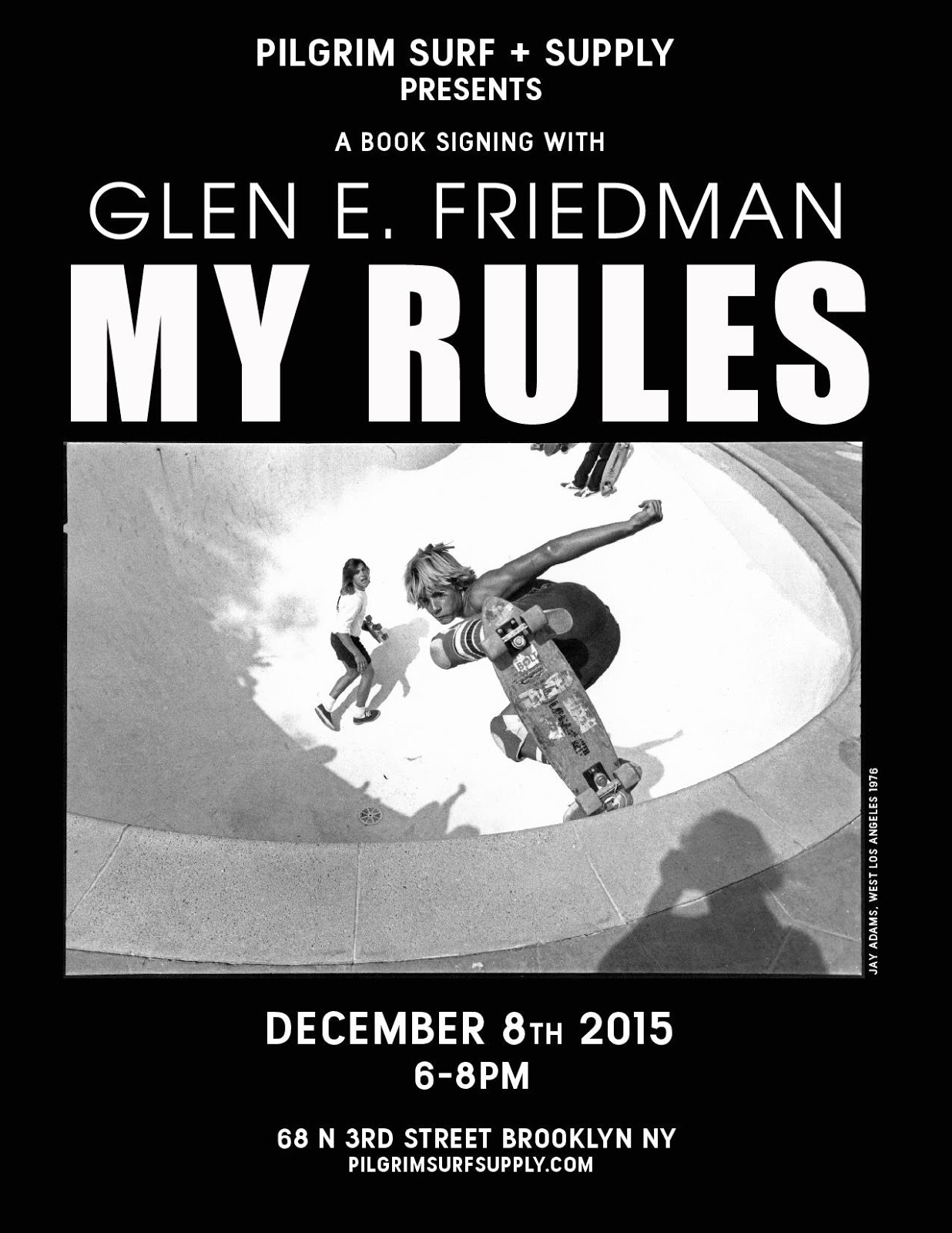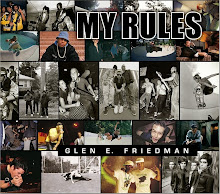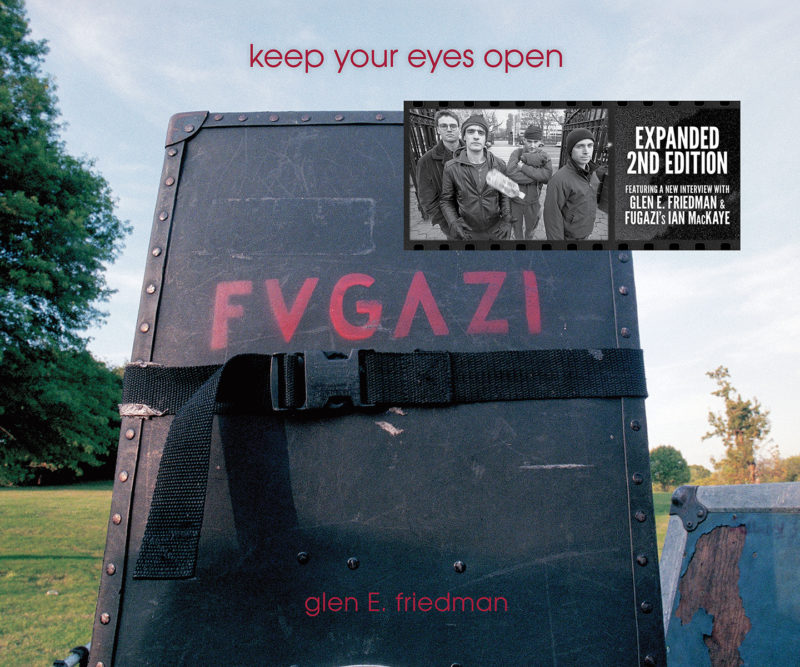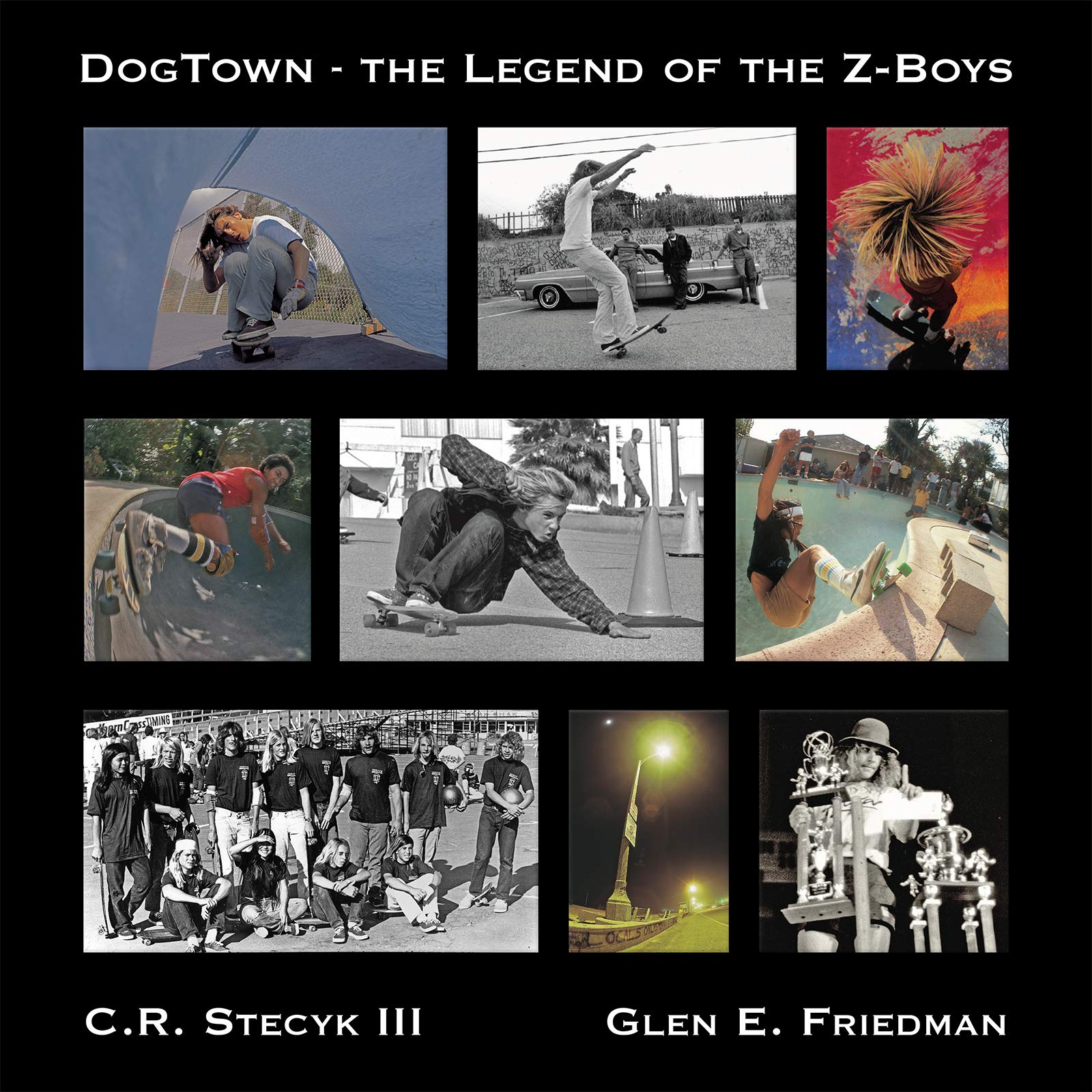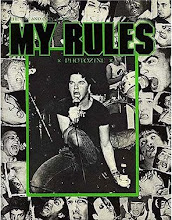
Saturday, December 31, 2011
Friday, December 30, 2011
Thursday, December 29, 2011
The Einstein Theory of Relativity 1923
“The Einstein Theory of Relativity” is a silent animated film made in 1923 that tried to explain Einstein’s work to the general public.It was produced by Fleischer Studios, best known for their delightful Betty Boop cartoons.
Thanks, BoingBoing
Labels:
Einstein,
Science,
silent movie,
vintage
Wednesday, December 28, 2011
Another country says fuck McDonald's

from Hispanically Speaking News
Bolivia will become the first McDonald’s-free Latin American nation, after struggling for more than a decade to keep their numbers out of ‘the red.’
After 14 years in the nation and despite many campaigns and promos McDonald’s was forced to close its 8 Bolivian restaurants in the major cities of La Paz, Cochabamba and Santa Cruz de la Sierra.
McDonald’s served its last hamburgers in Bolivia Saturday at midnight, after announcing a global restructuring plan in which it would close its doors in seven countries with poor profit margins.
The failure of McDonald’s in Bolivia had such a deep impact in the company’s Creative and Marketing staff, that they produced a documentary titled “Why did McDonald’s Bolivia go Bankrupt,” trying to explain why did Bolivians never crossed-over from empanadas to Big Macs.
The documentary includes interviews with cooks, sociologists, nutritionists and educators who all seem to agree, Bolivians are not against hamburgers per sé, just against ‘fast food,’ a concept widely unaccepted in the Bolivian community.
Fast-food represents the complete opposite of what Bolivians consider a meal should be. To be a good meal, food has to have be prepared with love, dedication, certain hygiene standards and proper cook time.
and from Pravda.ru
McDonald's leaves Bolivia healthier forever!
After 14 years of presence in the country, and despite all the existing campaigns and having a network, the chain was forced to close the eight restaurants that remained open in the three main cities: La Paz, Cochabamba and Santa Cruz de la Sierra.
It is a question of the first Latin-American country that will remain without any McDonald's, and the first country in the world where the company has to close because it persists in having their numbers in the red for over a decade.
The impact for the creative and marketing managers has been so strong that a documentary was filmed under the title "Why McDonald's went broke in Bolivia," where they try to somehow explain the reasons that led Bolivians to still prefer pies to hamburgers.
Cultural rejection
The documentary includes interviews with cooks, sociologists, nutritionists, educators, historians and more, where there is a general agreement: the rejection is neither to the hamburgers nor to their taste. The rejection is in the minds and mentality of Bolivians. Everything indicates that "fast food" is literally the opposite of a Bolivian's conception of how to prepare a meal.
In Bolivia, the food to be good requires, in addition to taste, care, and hygiene, a lot of preparation time. This is how a consumer values the quality of what goes into the stomach, also by the amount of time it took to make the meal. Fast food is not for these people, the Americans concluded.
thanks, Fernando Elvira
Labels:
corporations,
culture,
fast food,
mcdonalds
Tuesday, December 27, 2011
So What’cha Want? Revisited
This works real well for serious Beastie Boys fans.
Labels:
Beastie Boys,
humor,
mocumentary,
Video
Monday, December 26, 2011
National Geographic Photo Contest 2011


National Geographic is currently holding its annual photo contest, with the deadline for submissions coming up on November 30. For the past nine weeks, the society has been gathering and presenting galleries of submissions, encouraging readers to vote for them as well. National Geographic was kind enough to let me choose among its entries from 2011 for display here on In Focus. Gathered below are 45 images from the three categories of People, Places, and Nature, with captions written by the individual photographers. [check out all the images and captions HERE.]some more favorites below:









Labels:
national geographic,
Photography
Sunday, December 25, 2011
Saturday, December 24, 2011
Friday, December 23, 2011
Thursday, December 22, 2011
Street Art Utopia's photo gallery 2011
Street Art Utopia posted a gallery of "106 of the most beloved Street Art Photos – Year 2011." click on the link to see all of them, and see a few of my favorites below.






















thanks, BoingBoing






















thanks, BoingBoing
Labels:
street art
Wednesday, December 21, 2011
COOL.
Tuesday, December 20, 2011
The Story of DEF JAM records
- An Oral History, from the BBC
I posted this a few years back, and it's been taken down from YouTube and other sites, but just stumbled upon it on "Myspace" and never realized there was an imbedding code. It's really pretty damn good and certainly excellent sound quality if nothing else. Dig It.
An oral history of the origins of Def Jam Records, as told by Rick Rubin, Russell Simmons, L.L. Cool J, Bill Stephney, Chuck D., Glen E. Friedman, Hank Shocklee, Tim Westwood, DMC, Joe Perry, Beastie Boys and others. originally broadcast on BBC radio 2 - Narrated/Hosted by Paul Sexton for 10 Ounce production October 2006
Monday, December 19, 2011
FILM THE POLICE!
(to the tune of NWA's "Fuck Tha Police")
and the classic NWA original (with lyrics):
Labels:
hip-hop,
law enforcement,
NWA,
occupy wall street,
protest
Sunday, December 18, 2011
Saturday, December 17, 2011
Friday, December 16, 2011
Occupy 2.0 #D17

Join artists, musicians, and local community members for an all-day performance event in support of Occupy Wall Street and the occupation of space and reclaiming of the commons.from http://occupywallst.org/
Freedom of expression and the right to assemble are sacred human freedoms. Through bold, courageous actions, Occupy Wall Street has renewed a sense of hope, revived a belief in community and awakened a revolutionary spirit too long silenced. To Occupy is to embody the spirit of liberation that we wish to manifest in our society.
On Saturday, December 17th – the 3 month anniversary of the birth of this movement, we will gather to celebrate Occupy Wall Street and to occupy space together.
SATURDAY, DECEMBER 17th at 12PM
DUARTE SQ. PARK, 6th AVE & CANAL,
PROTECT & CELEBRATE THE OCCUPY MOVEMENT
FOR SOCIAL AND ECONOMIC JUSTICE
OCCUPY
Labels:
occupy wall street,
protest
Thursday, December 15, 2011
"Pay To Cum" X-mas with the Peanuts crew
"Pay to cum" for those that do not know was the first song the BAD BRAINS put out on record. An all time hardcore punk milestone and now classic.
Labels:
Bad brains,
holiday,
humor,
peanuts
Wednesday, December 14, 2011
The Health of Children and Consumers is Threatened by Conservative Push for Corporate Speech Rights
from AlterNet:
By Steven RosenfeldSome pro-business federal judges have shockingly approved a constitutional right for big companies to avoid revealing product dangers on labels.
In recent years, corporate lawyers representing industries whose products touch millions of American lives have stopped numerous government efforts to better inform the public about possible health risks with an eyebrow-raising legal strategy. They have asserted a constitutional right not to speak, or say more than they want on labels and advertising, and pro-business federal judges have agreed, rejecting the public’s right to know.
In cases involving manmade hormones fed to dairy cows, heart and lung disease caused by tobacco, the nutritional value of foods contributing to childhood and teenage obesity, and even radiation emitted by cell phones, the industries keep returning to court until a business-friendly judge or majority on an appeals court rules that the First Amendment includes the corporate right not to ‘speak’ if it could harm profits.
“They invoke the Amendment’s protection to accomplish exactly what the Amendment opposes,” wrote U.S. Court of Appeals Judge Pierre Leval, in a lengthy dissent in an early case in which his peers sided with industry and cited the First Amendment to overturn a state law labeling hormone-containing milk products. “The majority’s invocation of the First Amendment to invalidate a state law requiring disclosure of information consumers reasonably desire stands the Amendment on its ear.”
The labeling cases are not the only way corporations have been seeking to enlarge First Amendment speech rights outside the political arena.
This past June the Supreme Court ruled that drug makers’ constitutional speech rights included ‘selling' patient records, overturning a Vermont law that sought to keep the files private. Justice Stephen Breyer’s dissent said the Court was setting a dangerous precedent by allowing the First Amendment to be used to avoid reasonable government regulation.
“At best the Court opens a Pandora’s Box of First Amendment challenges to many ordinary regulatory practices that may only incidentally affect a commercial message,” he warned. “At worst, it reawakens Lochner’s pre-New Deal threat of substituting judicial for democratic decision making where ordinary economic regulation is at issue.”
Breyer’s reference to the Lochner Era was shorthand for what many right-wingers would like to see the judiciary do today—roll back government regulation. Lochner refers to the early 20th century when the Supreme Court reversed many workplace rights. It ended when the Court relented to allow the new deal to allow the New Deal's progressive reforms to take place.
Indeed, today’s corporate champions, such as Washington Post columnist George Will, are pining for an activist judiciary that prioritizes corporate rights above those of citizens. They see nothing wrong with extending the Constitution’s political freedoms given to individuals to modern profit-making corporations. As Will wrote this September in a piece attacking liberals, “So much for the idea that one of the Constitution’s primary purposes is the protection of individual rights against majority tyranny.”
Don’t Call It A Food Fight
The mainstream media calls it a Washington food fight. But that belittles the stakes.
One-third of American children and teens age 17 and younger are overweight or obese. The Federal Trade Commission, created a century ago is to protect consumers, has been studying the issue for years. It has found little consistency in the marketing and labeling of foods that are a mainstay of children and young adult diets. So the FTC, working with other federal agencies that studied the science behind what has been called an epidemic – The Department of Agriculture, Food and Drug Administration, and Centers for Disease Control and Prevention – last April announced voluntary product marketing guidelines for foods targeting youths, including limits on ingredients such as sugar, fat and salt. The FTC will soon issue a final report to Congress, including the voluntary guidelines.
This federal effort has prompted a lobbying stampede that continues to this day.
In July, some of the America’s largest food corporations, including Burger King and McDonald’s, announced their own marketing standards to defang, if not to derail, the FTC guidelines. Preemption is an old tactic in Washington. Their perspective reached prominent newspapers, such as at USAToday, which editorialized that the “industry standards aren’t bad.” In response, Josh Golin of Campaign for a Commercial-Free Childhood, wrote, “The brouhaha over the government proposal is the latest proof that asking corporations to work against their economic interests is futile.”
But then corporate lawyers added another twist.
The Washington Legal Foundation, a non-profit law firm that seeks to affirm and expand corporate rights, filed comments with the FTC claiming that the guidelines, even though voluntary, would be “a clear violation of First Amendment Rights.” Their accompanying press release said:
“Under Supreme Court case law, First Amendment protections kick in whenever government regulation “burdens” speech, not simply when the government adopts an outright prohibition on speech. WLF argued that the “burden” imposed by the Guidance’s “voluntary” advertising restrictions would be considerable, because many companies will be frightened by the unknown consequences of not complying.”
In other words, even a nudge to reveal more nutritional information was unacceptable.
“Are you really surprised?” replied Betsy Lordan, FTC spokeswoman, when asked to comment on the Foundation’s claim. “There is nothing new with companies trying to come up with reasons for not being regulated.”
But, strictly speaking, the federal agencies are not trying to regulate the food industry.
The FTC is issuing a year-end report to Congress, including voluntary ingredients and marketing guidelines. Congress will then decide what action, if any, to take. The FTC regularly issues guidelines for all kinds of industries, such as what is permissible with celebrity endorsements. Its goal is to deter commercial misrepresentation and fraud.
Nonetheless, the Washington Legal Foundation said this FTC-led food marketing effort exceeded its instructions from Congress because “instead of making recommendations to Congress, the Guidance makes recommendations directly to the food industry.” That criticism is to be expected from an anti-regulation think tank. But its lawyers also said that how a corporation labels its food products is constitutionally protected speech—as long as what is printed on the labels is true.
This is legally correct but a sly argument because companies do not have a legal duty to say everything they know about their products on their packaging and advertising. They can—and do—omit key details that could erode profits. And, as Judge Leval said in his dissent in the milk labeling case, government has the power to require companies to tell the public more about products if a public interest is served, such as protecting health.
“Freedom of speech is not an absolute right, particularly in the commercial context,” Leval wrote. It is “subject to regulation if the government has a substantial interest in regulating the speech, the regulation directly advances that interest, and is no more intrusive than necessary to accomplish its goal.”
The Washington Legal Foundation told the FTC that food corporations would be harmed if they could not freely label or advertise, or if they felt government pressure to include more nutritional information, such as how fatty, sugary or salty their products covered with cartoon wrappers truly were. Their FTC brief omits any mention of the millions of overweight American kids and teenagers, or the government’s legitimate interest in improving public health trends.
“Government action can constitute a ‘burden’ on speech even when it takes the form of ‘voluntary’ government speech standards,” WLF said. “The government seeks to change the dietary habits of children. There is no reason to believe that the only means of doing so is to suppress truthful speech.”
Tobacco and The Right Not To Speak
WLF’s arguments about corporate speech rights are not unique or limited to food labels.
Under its project entitled, “Criminalization of Free Enterprise – Business Civil Liberties Program,” it has filed briefs with the FDA opposing future nutritional labeling of food served in restaurants, required under the new federal health care reform law. It also filed briefs in federal appeals court arguing that shopkeepers in New York City should not be forced “to display signs conveying the city’s anti-smoking message, with which they disagree.” Their brief said signs, such as “Smoking Causes Lung Cancer,” accompanied by “one of three graphic, color images depicting the potential effects of tobacco use: a brain damaged by a stroke, decaying teeth and gums, or a diseased lung,” and a New York City seal, are “controversial, non-factual disclosures.”
This characterization—controversial and non-factual—is how the large tobacco firms described the accusations made by its critics in 1967, nearly four decades before the U.S. Department of Justice convicted them of racketeering by concealing science and other evidence that cigarettes severely harmed human health.
“The First Amendment protects not only the right to speak but also the right not to speak,” WLF’s website said, summarizing the New York City case. “Forcing someone to convey and associate with speech with which he disagrees violates the free speech protections of the U.S. Constitution… Many tobacco retailers object to the signs.”
Substitute ‘tobacco merchants’ for ‘milk producers’ in the following comment by Judge Leval in the 1996 Vermont milk labeling case, and consider how corporate lawyers have been pushing to not just protect profits, but also to expand constitutional protections.
“Notwithstanding their self-righteous references to free expression, the true objective of the milk producers is concealment. They do not wish consumers to know that their milk products were produced by use of rBST because there are consumers who, for various reasons, prefer to avoid rBST… The question is simply whether the First Amendment prohibits government from requiring disclosure of truthful relevant information to consumers.”
The Appeals Court majority, ruling against Vermont, disagreed, saying the labeling law was based on “consumer curiosity alone,” not science, because no federal agency had found rBST was unsafe. It said, “Strong consumer interest and the public’s ‘right to know’ … are insufficient to justify compromising protected constitutional speech.”
In other words, the public’s right-to-know is subordinate to private industry’s right to conceal information from consumers.
The federal court system is byzantine. Each federal circuit is a legal kingdom unto itself. Judges in one circuit can ignore what judges in other circuits do, until conflicting rulings work their way up to the Supreme Court – where they are settled until Congress passes new laws. (Or until those laws are challenged in lawsuits, restarting this cycle).
In 2009, Congress passed the Family Smoking Prevention and Tobacco Control Act, which, among other things, authorized the FDA to regulate warning labels on cigarette boxes. It was the biggest change in cigarette labels in 25 years. The agency published its rules describing the new warnings in June 2011. New text messages and photographic images would “bring Americans face to face with tobacco-related disease on every cigarette package and advertisement,” the FDA website said. Four of the five largest American tobacco companies sued the FDA in August in U.S. District Court in Washington, D.C.
In early November, U.S. District Judge Richard Leon ruled that the FDA’s regulations forcing the industry to put the same kind of graphic images as in the New York case on the outside of cigarette boxes would likely violate their constitutional speech rights. He ordered the mandatory labeling process stopped until the court fight was over, which could take years. But suspending the introduction of the FDA’s new labels was not Leon’s only gift to cigarette makers.
Leon also agreed with tobacco lawyers, finding the photographic images—not the printed warnings—would “confiscate the front and back portions of cigarette packaging” and went beyond “purely factual and uncontroversial information,” the legal standard that he cited for government-compelled speech such as warning labels. “The Court concludes that plaintiffs have demonstrated a substantial likelihood that they will prevail… and that they will suffer irreparable harm.”
Who is Harmed?
Courts often look for middle ground balancing interests—often frustrating advocates on either side of a fight. The question of who is being harmed—and harmed more, the public or private commercial interests—shows how citizens have lost ground to corporations as fervent federal judges have expanded and elevated corporate speech.
Judge Leon’s order suspended a political process that included state attorneys general from both political parties, Congress, the Justice Department under a Democratic and Republican president, and other federal court rulings from judges appointed by three presidents. None of that mattered to Leon. “I would remind the Government that even decisions from other district courts in our Circuit have no binding effect on this Court,” the activist judge wrote.
In Judge Leon’s discussion of the “harm that is more than simply irretrievable,” he said that the tobacco companies will have to spend “tens of millions of dollars” redesigning cigarette packaging to comply with the FDA rules. He said the FDA-required images would use too much space on cigarette boxes, which also was unconstitutional.
“The loss of First Amendment freedoms, for even minimal periods of time, unquestionably constitutes irreparable injury,” he wrote, quoting the 1971 Supreme Court ruling that protected the New York Times and Washington Post from retaliation from the federal government after they published the Pentagon Papers, which detailed the military’s failures in the Vietnam War.
Think about that comparison: the tobacco companies’ rights to avoid putting photographs on cigarette box warning labels—after losing a major racketeering case and being ordered to change their labels by Congress—are comparable in Leon’s courtroom to the media’s right to print information about an unpopular war that killed 45,000 Americans by 1971.
An Uphill Fight
Another recent federal ruling where public-interest concerns have been thwarted concerns the first-in-the nation’s cell phone radiation labeling law.
In late October, U.S. District Judge William Alsup suspended a San Francisco ordinance requiring cell phone makers to include health warnings about radiation from the devices. These were to include an in-store poster and sticker, and fact-sheet given to buyers. The national trade association for the wireless industry sued to block the law, arguing that it violated their First Amendment rights to not speak about their products.
Like Judge Leval’s dissent in the Vermont milk labeling case, Judge Alsup found “that a government may impose, out of caution, at least some disclosure requirements based on nothing more than the possibility that an agent may (or may not) turn out to be harmful.” That statement appeared to be a public interest victory; but was not the end of the Court’s remarks. Judge Alsup found the fact-sheet was “misleading and must be corrected.”
He said the city’s fact-sheet could easily prompt buyers to “misunderstand this as more dangerous than it really is.” Like Judge Leon in the FDA tobacco case, he also rejected images that the city wanted to use in its poster. Further, Alsup ruled the poster was “not reasonably necessary and would unduly intrude on the retailers’ wall space.” The judge also said that the “sticker requirement is also unconstitutional” because “stickers will unduly intrude upon the retailers’ own message.”
Judge Alsup ordered the city to rewrite its fact sheet, which is to be submitted to his court for approval. Those revisions will undoubtedly be weaker than health officials wanted. But buried in the Court’s interim ruling was wording that was less militant than other activist judges who have recently ruled in corporate First Amendment rights.
“There really will be little irreparable injury in complying with the fact-sheet so long as the corrections are included to mitigate the nonfactual, misleading and alarmist tenor of the fact-sheet,” Alsup wrote. “The San Francisco program is not aimed at slowing sales. It is aimed at precautions for consumer use and presupposes that all sales will flow unabated. Industry profits will not sag.”
Taken alone, that wording was dangling a carrot before the city in a ruling where Alsup gave the wireless industry almost everything it wanted. But the CTIA-The Wireless Association, the national trade group that sued the city, responded by saying it still was not enough. “CTIA respectfully disagrees with the Court's determination,” its press release said, and “is considering its options regarding further proceedings.”
In other words, in yet another corporate speech versus the public interest fight, corporate lawyers—with virtually bottomless corporate checkbooks behind them—are betting they will find an even more business-friendly courtroom, completely censoring the public’s right to know any health information about radiation when buying a cell phone.
Steven Rosenfeld covers democracy issues for AlterNet for is author of "Count My Vote: A Citizen's Guide to Voting" (AlterNet Books, 2008).
Labels:
corporations,
corruption,
health
Tuesday, December 13, 2011
NYPD shred kids' paper hearts commemorating Occupy arrestees before their very eyes
Parents for Occupy Wall St. March against police brutality. Children created 5,000 paper hearts one for every peaceful protester arrested on behalf of the Occupy Wall Street movement in the three month period leading up to the march. The children delivered them to New York City Hall for Mayor Bloomberg only for the NYPD to aggressively tear them down and apart in front of the children. Children cried and the NYPD did yet another action against peaceful protesters. We as a country should not stand for this, get involved, speak up, do something for our children's futures.from Cory Doctrow at BoingBoing
It's predictable but weird how many of the YouTube commenter's criticize the parents for involving their kids with a protest. I grew up on protest marches and demonstrations with my parents, and I take my daughter to them, because I think that parenting is (partly) about imparting values to your children. Growing up amid a critical discourse about issues of social justice and freedom helped make me who I was, and my parents were always available to debate these subjects with me, encouraging me to listen to arguments on either side without hiding which side they were on.I whole heartily agree with Cory on this. In fact I took my son down to the first "Parents for Occupy Wall St." event down in the early days of this revolution at Zuccotti park, it was a beautiful thing. Shame on the pigs who took down the hearts off the City Hall fence.
 My son and I - 21 October 2011
My son and I - 21 October 2011CNN report from back on October 21st:
Monday, December 12, 2011
The Punk Patriot
from Richard Metzger at DangerousMinds:
I was looking for an image of an old labor movement poster that had the fat cat asking the mouse “You going let that union guy steal your cookie?” which I’ve always thought was the ultimate stick in the eye to working class people who watch Fox News and believe billionaire “job creators” deserve tax cuts, whilst union members and their families—you, know, their actual neighbors and relatives!—should have to make greater sacrifices. Instead of a vintage image, I came across the above illustration, Molly Crabapple and John Leavitt’s “We’re All in This Together,” their contribution to the terrific looking Occupy Comics project (which Alan Moore has just signed on to as well).
Isn’t that just a thing of beauty? It deserves to be a poster/lithograph too. I bet a lot of people would buy them. I certainly would. It’s something that needs to get around. and be seen.
I love the inclusion of the quote from quintessential 19th century “robber baron” Jay Gould, who (in)famously said:That quote (and Google) in turn led me to stumble across The Punk Patriot, who has been making politically-themed YouTube videos for some time now—that are often quite good—with the aim to promote “life, liberty and the pursuit of a less fucked-up government.” Worthy goals, indeed!“I can hire one half of the working class to kill the other half.”
In the clip below, The Punk Patriot takes on the Reichwing echo-chamber. This is a great video to send to that Archie Bunker-ish great uncle of yours who annoyed the shit out of you on Thanksgiving with his Fox News/Dittohead nonsense…
Follow The Punk Patriot on Twitter.
Visit The Punk Patriot’s blog.
Sunday, December 11, 2011
The Diagnosis of Xeni Jardin
Xeni has become a friend in recent years and someone who's work I always appreciate, and use on this blog here often. Friday on the infamous blog Boing Boing, that she helped to start many years ago before most of us had ever even heard of the internet, she told her current story of her own diagnosis. Read the story below and a comment from another mutual friend, and another bad ass blogger, Richard Metzger (DangerousMinds) after.

Note from Richard Metzger's DangerousMinds blog:

I have breast cancer. A week ago, I had breast cancer, and the week before that, and the week before that. Maybe five, eight, even ten years ago, the first bad cell split inside me, secretly. But I didn't know. This is how I arrived at knowing.
Two friends of mine were recently diagnosed. When news of the first came, I felt sadness. When news of the second came a few weeks ago, I felt a different kind of shock. I'd never had a mammogram. Even though I was ten years younger than the time they say you need to start, it felt like time to start, and when her news came I thought: I need to do this right now. For my friends, for me. Solidarity. Something small I can do, some little action against the big unknowable that swoops down without warning and strikes the ones we love.
Around the same time, I'd became aware of a funny stiffness in a spot on my own body. But anomalies in women's bodies come and go all the time, and it was a fluid whatever-thing, something that would pass, definitely not a lump, nothing that my waking, speaking mind would grasp as danger. This anomaly must be misplaced anxiety, my logic-brain tried to explain to my lizard-brain; maybe it's me wanting to make my friend's bad news all about me.
I called my insurance company for a clinic referral, then dialed a few places on a list the guy in their Indian call center emailed. Over the phone, the clinics all sounded like places you'd take a pork chop to be examined, not a human breast, not a person, and not me. I googled around and found a place with a lot of stars on Yelp and other online ratings services from women who'd gone and felt they'd been treated well. Pink Lotus Breast Center. The women who answered the phone there sounded cool. I made an appointment.
I live online as much as I live offline. Often, I move around in the world staring into a device as I walk, sharing bits of one realm with the other. The morning I went in for my first mammogram, I felt nervous. I would tweet this new thing, like I do with lots of new things, and make the unknown and new feel less so. Maybe by doing so, I thought while I was driving, other women like me who'd never done this would also feel like it was less weird, less scary, more normal and worth doing without hesitation. I'd crack some 140-character jokes. I'd make fun of myself and others. I would Instagram my mammogram.
The women at the front desk were kind and welcoming. Both were from Virginia, like me. One of them is from the back-country part where there's still no internet. Her dad and uncle work the fields. We talked about growing corn and hogs, how they still make cane molasses with a horse-drawn grinder, and about poor white Appalachian babies nursed on Mountain Dew.
The mammogram technologist saw on my chart that I'd lost a loved one to ALS. She had too. I hugged her, and she hugged back. She folded my body into the machine, pressed some buttons, folded me another way, and the machine clicked and whirred and clicked and whirred. Then it was over. She told me to wait.
I tweeted the waiting. Inviting the internet in is something I do every day anyway, but this time it was like a shield. Nothing bad can happen in a new place if you're cracking jokes and 50,000 people are watching. You're safe out here, in here, out here.
The waiting-moment stretched out, and out, and out, and finally she returned.
Where was that thing you felt that isn't anything, she asked?
Here, I showed her.
Put your arms in the air, she said. She felt, and squinted, and her brow furrowed, and she stepped aside again. Then she returned. Come back in a few hours when the doctor is free, she said, and we'll look a little more closely with ultrasound, just to be thorough. She smiled. Maybe just go have some lunch, she said, and we'll wrap this up when you return.
The hours stretched out and out and out. I felt nervous, but it was still all normal. I was too nervous to eat, but not too nervous yet to tweet. A finger pulling down the iPhone touchscreen still yielded replies from familiar names, and this was all going to end well. I drove back to the clinic.
Dr. Kristi Funk is her name. How can anything go bad when the doctor's name is Funk, and there are so many funny things to tweet? She told me to lie down, put some goop on my chest, and waved a wand through the goop. The waves appeared on a screen. It looked like NASA video, something the Mars rovers might transmit home to a JPL engineer searching for distant water.
She showed me a crater in the waves, a deep one, with rough edges and a rocky ridge along the northern rim. Calcification. Badly-defined boundaries. Not the lake we'd hoped to find.
"The first thing you're going to learn about working with me is that I'm a straight shooter," Dr. Funk said. Her voice was steady and reassuring.
"That's how you know you can trust me. I'm going to tell you everything, and I'm going to tell it to you like it is."
I forget the rest of what she said, but it added up to this: the crater was cancer.
As the words sank in, the Mars rover crawled over another steep ridge, out of the crater and into a valley, and found one of my lymph nodes, larger and darker than the others. A rocky prominence. A sentinel node. No water there, just fast-dividing cells that kill.
I believe that we are looking at breast cancer, and that it has spread to one of your lymph nodes, she said. We're going to do a biopsy right away to confirm and learn more.
Another woman came in, and held my hand. Dr. Funk shot the biopsy gun in the air first so I wouldn't be afraid of the sound. That's when the shaking started and my heart started pounding.
I cried, but someone else was doing the crying, someone else was doing the shaking, someone else was lying there, and now the gun was diving in to someone else's flesh to bring back rock samples from outer space for the lab to analyze.
The shaking didn't stop. I tried to dial the people I loved on my iPhone with one hand while the assistant held down my other arm, pushing cotton into the place where the probe dove in for samples, where blood was now coming forth.
My fingers were cold and shaking, and I couldn't hit the numbers on the screen. When I finally got through, someone else's voice was coming out of my mouth, and it was taking forever for the stuttery radio transmissions to beam through space, from the cold planet I was lost on, way out here, far from home.
Treatable, curable, survival odds, margins, chemotherapy, surgery, radiation. Someone else's problems, someone else's words. The biopsy came back the next day. Those words became my own.
I do not know all of what's ahead. I know a little. I know that there is a new kind of life on the other side of this thing. A changed mind and body. A new appreciation of time, and breath, and health, and life, and loved ones.
The gravity in this place is different. I've spoken to others who've traveled out here, too, and returned home safely. When you become one of them, you learn quickly that you share a language others can't understand.
The trick, these fellow travelers tell me, is to accept the not knowing and find your equilibrium in that new gravity. Calm the mind. Find your balance out on the cold planet, whether or not you know the next step, or the date of the next appointment, or what good or bad news the Technetium-99 isotopes floating around in your blood during the last scan reveal.
You must be at peace with not knowing, they tell me. That is how you get through outer space, and find your way back home.
The thing about this thing, or, at least, this first week of this thing, is how it takes you out there to the cold planet again and again and again, when you aren't expecting it. Long, undulating waves of fear pull you out to where you are alone and unreachable, even by words sent from the strongest satellite.
The thing that brings you back is love.
Note from Richard Metzger's DangerousMinds blog:
As many of DM’s readers probably know, Xeni Jardin is one of my and Tara’s closest friends and favorite people in the world. As a mutual friend once said of her, “Xeni is like a being from an advanced planet or the future who has come to Earth to help us all evolve faster.” If there’s anyone who can beat this, it is, for sure, our Xenorita, and she is in really good hands, which is a real comfort to all of us who care about her. Send some good vibes—and love—her way in the Boing Boing comments, won’t you?
Labels:
cancer,
Friends,
health care
Subscribe to:
Posts (Atom)















